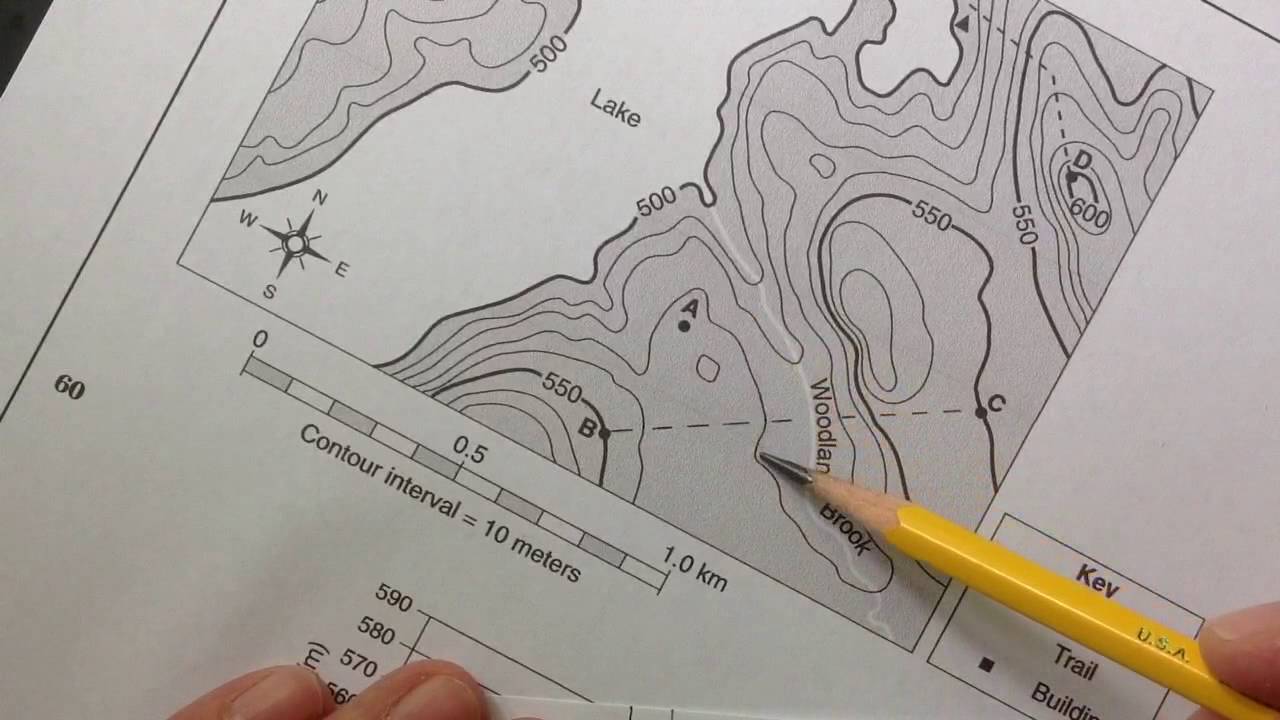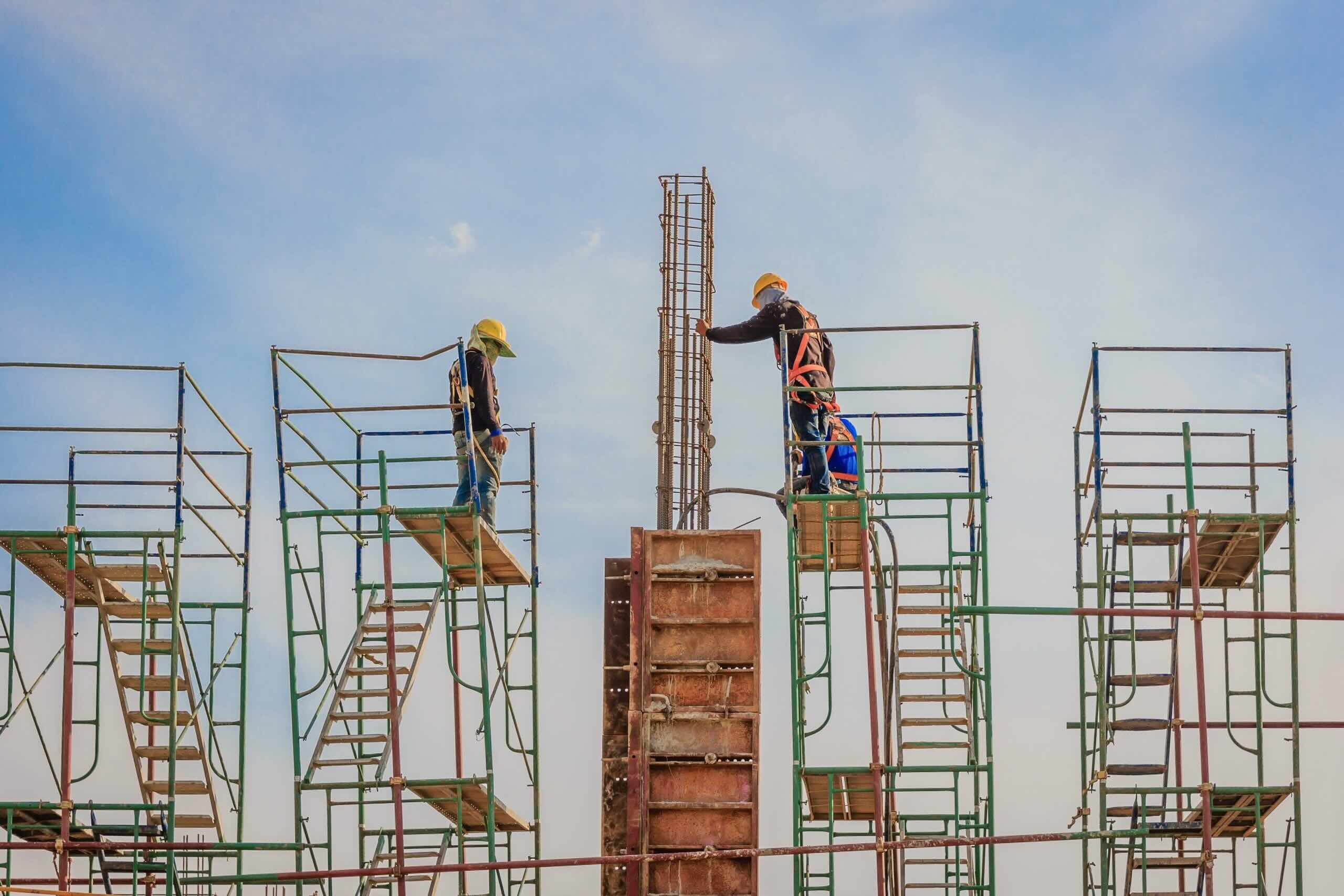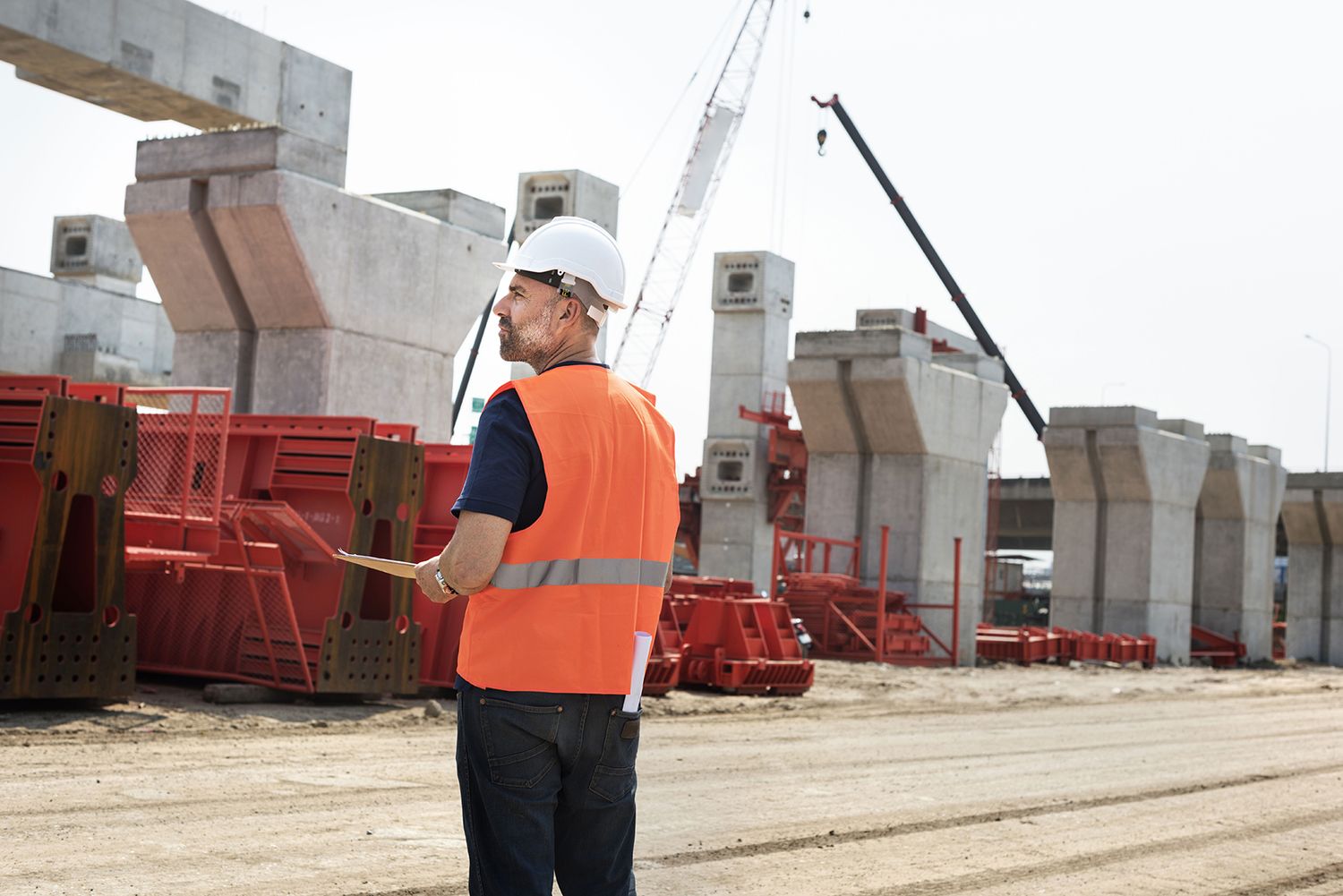Home>diy>Building & Construction>Why Are Business Owners Most Likely Viewing A Topographic Map Before Construction?


Building & Construction
Why Are Business Owners Most Likely Viewing A Topographic Map Before Construction?
Modified: December 7, 2023
Discover why business owners are using topographic maps for their building construction projects. Learn how these detailed maps help ensure project success.
(Many of the links in this article redirect to a specific reviewed product. Your purchase of these products through affiliate links helps to generate commission for Storables.com, at no extra cost. Learn more)
Introduction
When it comes to the construction industry, there are numerous factors that need to be considered before embarking on any project. A crucial step in the planning phase is evaluating the site where the construction will take place. This involves analyzing the terrain, understanding the topography, and assessing any potential obstacles or challenges that may arise during the building process.
One tool that business owners and construction professionals rely on heavily is a topographic map. This essential document provides detailed information about the physical features of a specific area, including the elevation, contours, water bodies, and other natural and man-made structures. Viewing a topographic map before construction allows business owners to make informed decisions, anticipate potential issues, and effectively plan their project.
So why are business owners most likely to view a topographic map before starting construction? Let’s delve deeper into the importance of topographic maps in the construction industry.
Key Takeaways:
- Topographic maps are essential for construction planning, providing insights into terrain, natural features, and obstacles. They enable informed decision-making, cost estimation, and environmental impact assessment, ensuring successful project execution.
- By leveraging topographic maps, construction professionals can optimize resource allocation, streamline logistics, and anticipate project risks. These maps enhance decision-making, project management, and overall construction outcomes.
Understanding the Role of Topographic Maps in Construction
Topographic maps play a vital role in construction projects as they provide crucial information about the site’s physical characteristics. These maps are typically created through a process called topographic surveying, where professionals use specialized equipment to measure and record the elevation and features of the land accurately.
By studying topographic maps, construction professionals can gain valuable insights into the site’s unique landscape and make informed decisions about their project. Here are some key aspects where topographic maps prove to be invaluable:
Evaluating Terrain and Elevation Changes
One of the primary uses of topographic maps is to evaluate the terrain and understand the elevation changes across the construction site. By studying contour lines on the map, which depict the different levels of the land, business owners can identify potential challenges such as steep slopes, ravines, or cliffs that may require specialized construction techniques or additional safety measures.
Identifying Natural Features and Obstacles
Topographic maps provide a detailed depiction of natural features such as rivers, lakes, forests, and vegetation. This information is crucial in determining the impact of these features on the project and how they need to be addressed during construction. For example, if the site has significant vegetation or protected habitats, the construction plan may need to be adjusted to minimize any adverse effects.
Additionally, topographic maps can help identify potential obstacles like rocky areas, caves, or old infrastructure that may be hidden beneath the surface. By knowing these obstacles in advance, business owners can plan accordingly and allocate resources to tackle any potential challenges that may arise.
Evaluating Terrain and Elevation Changes
One of the key advantages of topographic maps in construction is the ability to evaluate the terrain and understand the elevation changes across the site. Terrain and elevation play a significant role in determining the feasibility of construction projects and can greatly impact the design, cost, and construction methods employed.
Topographic maps provide visual representation of the land’s topography through contour lines, which indicate changes in elevation. By closely examining these contour lines, business owners and construction professionals can identify potential difficulties and opportunities presented by the site’s terrain.
Read more: What Is A Construction Business
Identifying Steep Slopes and Slope Stability
Contour lines on topographic maps enable the identification of steep slopes. Steep slopes may pose challenges during construction, as they often require additional measures to ensure stability and safety. In these cases, specialized slope stabilization techniques may need to be implemented, such as retaining walls or slope reinforcement.
Understanding slope stability is crucial to avoid potential hazards during and after construction. Topographic maps can indicate areas prone to landslides or erosion, which can impact the long-term stability of the project. This information is vital for assessing the overall feasibility and costs associated with necessary mitigation measures.
Planning Earthwork and Grading
Topographic maps provide valuable information for planning earthwork and grading operations. By studying the contour lines, construction professionals can determine the extent of earthwork required, such as leveling the site or creating slopes to accommodate buildings or infrastructure. This information is crucial for accurate cost estimation and efficient project management.
Additionally, topographic maps can help identify areas with excess materials that can be used for fill purposes, minimizing the need for importing additional materials. By optimizing earthwork operations, construction projects can minimize costs, reduce environmental impact, and streamline the construction process.
Accounting for Drainage Patterns
Another important consideration in construction is proper drainage. Topographic maps allow business owners to assess the natural drainage patterns of the site. Understanding how water flows across the terrain helps in determining the placement of drainage systems, stormwater management, and the prevention of issues such as flooding or erosion.
Identifying Natural Features and Obstacles
Topographic maps are invaluable tools in identifying and understanding the natural features and obstacles present on a construction site. By studying these maps, business owners and construction professionals can gain essential insights into the site’s unique characteristics, allowing them to make informed decisions and plan for any challenges that may arise.
Vegetation and Ecological Considerations
A topographic map provides valuable information about the vegetation present on the site. This includes forests, wetlands, and other ecological features. Understanding the type and extent of vegetation is crucial for minimizing the environmental impact of the construction project. It allows for appropriate planning and potential mitigation measures to protect sensitive ecosystems and habitats.
Furthermore, topographic maps can help identify protected or regulated areas that need to be avoided during construction. These areas may include designated wildlife habitats, wetlands under conservation status, or areas with endangered species. Identifying and respecting these areas is not only a legal requirement but also demonstrates environmental responsibility.
Identification of Water Bodies
Topographic maps enable the identification of water bodies such as rivers, lakes, and ponds that are present on or around the construction site. This information is crucial for determining how these water bodies may impact the construction project and vice versa.
Understanding the proximity of water bodies facilitates planning for necessary measures to protect water quality during construction. It also provides insights for incorporating water management systems, such as drainage channels or retention ponds, into the project design. By properly managing water on the construction site, potential environmental issues can be mitigated, and the long-term sustainability of the project can be ensured.
Recognition of Potential Obstacles
Topographic maps help identify potential obstacles that could impact the construction process. These obstacles can include rocky areas, cliffs, caves, or other physical features that may pose challenges or safety risks during construction.
By recognizing these obstacles in advance, construction professionals can plan for necessary precautions and specialized equipment or techniques. This proactive approach eliminates or minimizes delays and unexpected costs associated with encountering these obstacles during construction. It also ensures the safety of workers and the successful completion of the project.
Assessing Drainage Patterns and Water Bodies
Topographic maps provide crucial information for assessing drainage patterns and understanding the presence of water bodies on a construction site. Drainage patterns play a significant role in determining the design and implementation of drainage systems, as well as identifying potential water-related challenges that may arise during construction.
Read more: How Much Does A Plumbing Business Owner Make
Delineating Natural Drainage Patterns
Topographic maps allow for the identification of natural drainage patterns across the construction site. By analyzing the contour lines and observing how they converge or diverge, construction professionals can determine the flow of surface water across the site.
Understanding these natural drainage patterns is essential for designing efficient and effective drainage systems. By aligning drainage infrastructure with the existing patterns, such as swales, ditches, or culverts, the risk of water accumulation and subsequent flooding can be minimized. This helps to maintain site integrity and prevents potential damage to structures or environmental impact.
Managing Stormwater Runoff
Stormwater management is a critical component of any construction project, and topographic maps are invaluable in this regard. They aid in the identification of low-lying areas or depressions that may be prone to collecting water during heavy rainfall events.
By understanding the natural topography and drainage patterns, construction professionals can design appropriate stormwater management systems, such as retention ponds or drainage basins, to capture and control excess runoff. This helps to prevent erosion, reduce the risk of flooding, and protect the site’s infrastructure and surrounding environment.
Potential Groundwater Issues
Topographic maps can also provide insights into the presence of groundwater on or near the construction site. Groundwater can have a significant impact on construction projects, as it can affect excavation, foundation design, and overall site stability.
By analyzing the contour lines and elevation information on topographic maps, construction professionals can identify areas where groundwater may be close to the surface or prone to seepage. This knowledge allows for proper planning and the implementation of appropriate measures to manage and control groundwater during construction. It may include strategies like dewatering, installing drainage systems, or adjusting the project’s foundation design to accommodate the groundwater conditions.
Overall, assessing drainage patterns and water bodies through the use of topographic maps is vital for effective flood prevention, stormwater management, and groundwater control during construction. By incorporating this information into the planning and design process, construction professionals can ensure the success and sustainability of their projects while minimizing potential risks and impacts.
Planning Access Routes and Site Layout
Topographic maps play a critical role in the planning of access routes and the layout of a construction site. Understanding the site’s topography and features allows business owners and construction professionals to strategically plan the movement of materials, equipment, and personnel, ensuring efficient and safe operations.
Read more: How To Start A Construction Business
Identifying Existing Access Points
Topographic maps provide valuable information about existing access points such as roads, highways, or trails surrounding the construction site. Analyzing the map allows for the identification of potential entry and exit points, determining the most suitable routes for transporting construction materials, machinery, and personnel to and from the site.
By using the existing access points and optimizing transportation routes, construction projects can minimize costs and reduce the environmental impact associated with creating new access roads or disrupting existing infrastructure.
Designing Site Layout
Topographic maps enable the visualization of the site’s contours and physical features, which is crucial for designing the optimal site layout. The information provided by these maps helps in determining the placement of structures, utilities, and other project components to maximize efficiency and operational effectiveness.
Business owners and construction professionals can use the topographic maps to identify leveled areas suitable for erecting buildings or infrastructure. They can also determine the most convenient locations for utilities, such as water supply lines, electrical grids, or sewer systems, by considering factors like slope, elevation, and proximity to existing infrastructure.
Accounting for Safety Considerations
The detailed information provided by topographic maps helps in identifying potential safety considerations when planning access routes and site layout. By understanding the terrain, elevation changes, and natural features, construction professionals can identify potential hazards and design appropriate safety measures.
For example, if the map highlights steep slopes or cliffs, barriers or guardrails may need to be installed to safeguard workers and vehicles. If a water body such as a river or lake is near the site, proper safety protocols and barriers may need to be implemented to prevent accidents or drowning hazards.
Overall, topographic maps are essential tools for planning access routes and site layouts in construction projects. By utilizing the information provided, business owners and construction professionals can optimize logistics, maximize operational efficiency, and prioritize safety throughout the construction process.
Estimating Earthwork Quantities and Costs
One of the critical factors in any construction project is estimating the quantities and costs associated with earthwork. Earthwork refers to the process of moving, excavating, and reshaping the land to prepare it for construction. Topographic maps prove to be invaluable tools in accurately estimating earthwork quantities and determining the associated costs.
Read more: How To Scale Construction Business
Determining Cut and Fill Volumes
Topographic maps provide essential information about the existing contours and elevations of the construction site. By analyzing the map, construction professionals can determine the difference between existing ground elevation and the desired finished grade elevation. This allows them to calculate the cut and fill volumes needed to level the site.
Estimating cut and fill volumes is crucial for proper planning and cost estimation, as it directly affects the amount of excavation or fill required. By understanding the earthwork quantities, construction professionals can allocate resources efficiently, such as excavation equipment, dump trucks for removal or importation of soil, and material disposal or recycling.
Calculating Material Quantities
Topographic maps also aid in calculating the material quantities needed for construction projects. By accurately analyzing the contour lines, construction professionals can estimate the amount of material required for various purposes, such as backfilling, embankments, or creating slopes.
Estimating material quantities helps in proper procurement planning and ensures that the right amount of materials is available at the right time. It also allows for cost estimation and budgeting, increasing the accuracy of project financial planning.
Assessing Hauling Distances and Costs
Another aspect of estimating earthwork costs is assessing the hauling distances required to transport materials to and from the construction site. Topographic maps provide valuable information about the existing roads, trails, and access points, allowing construction professionals to plan the most efficient hauling routes.
By analyzing the contour lines and understanding the site’s topography, construction professionals can identify the optimal paths for hauling equipment and materials. Assessing the hauling distances helps in determining transportation costs, fuel consumption, and scheduling logistics. It also allows for the consideration of any specific requirements or challenges associated with steep slopes, narrow roads, or weight restrictions.
Overall, topographic maps play a vital role in estimating earthwork quantities and costs. By utilizing the information provided by these maps, construction professionals can accurately plan and budget for earthwork activities, optimize resource allocation, and ensure the financial success of the project.
Analyzing Soil Properties and Geotechnical Considerations
Understanding the soil properties and geotechnical considerations of a construction site is crucial for ensuring the stability and success of any project. Topographic maps provide valuable information that helps construction professionals analyze soil properties and make informed decisions regarding geotechnical considerations.
Read more: How To Get Clients For Construction Business
Soil Composition and Type
Topographic maps can give insights into the soil composition and type present on the construction site. By analyzing the map, construction professionals can determine if the soil is predominantly clay, silt, sand, or a combination of these elements.
Knowing the soil composition is essential as it affects various aspects of the construction project. Different soils have varying properties, such as strength, drainage capabilities, and compaction characteristics. This knowledge enables construction professionals to design appropriate foundations and structures that can withstand the specific soil conditions and prevent future issues.
Understanding Soil Stability
Topographic maps also provide information about the stability of the soil at the construction site. By examining contour lines and identifying steep slopes or areas prone to landslides, construction professionals can recognize potential geotechnical challenges.
Analyzing soil stability is crucial for proper engineering design and ensuring the safety of the project. It helps construction professionals determine the appropriate techniques and measures to mitigate potential stability issues, such as slope reinforcement, retaining walls, or soil stabilization methods.
Assessing Geological Features
Geological features, such as fault lines, underground caves, or rock formations, can significantly impact construction projects. Topographic maps allow for the identification and assessment of these features.
Understanding the presence of geological features is crucial to avoid potential risks and plan accordingly. Construction professionals can take appropriate measures to address these features, such as conducting further geological surveys, adjusting the project’s design, or implementing specialized construction techniques to ensure the stability and integrity of the structures being built.
Consideration for Excavation and Foundation Design
Analyzing the soil properties and geotechnical considerations through topographic maps significantly influences excavation and foundation design. By understanding the soil’s bearing capacity, construction professionals can design appropriate foundations for structures, ensuring their stability and longevity.
Additionally, if excavation is required, the soil properties provide insights into the ease of excavation, potential groundwater issues, and the necessity for shoring or stabilization during the process.
Overall, topographic maps offer valuable information in analyzing soil properties and geotechnical considerations. By utilizing this information, construction professionals can make informed decisions, design appropriate structures and foundations, and mitigate potential risks associated with soil instability or geological features on the construction site.
Ensuring Regulatory Compliance and Environmental Impact Assessment
In the construction industry, regulatory compliance and environmental impact assessment are critical aspects that need to be addressed before undertaking any project. Topographic maps provide valuable information that aids in ensuring regulatory compliance and assessing the potential environmental impact of a construction site.
Identifying Protected Areas and Regulations
Topographic maps assist in identifying any protected areas or regulatory requirements that may apply to the construction site. These could include areas with historical or cultural significance, protected habitats, wetlands, or areas subject to specific zoning regulations.
By carefully analyzing the topographic map, construction professionals can determine if the project falls within any regulated zones or if additional permits or permissions are required before commencing construction. This ensures that the project meets all legal requirements and avoids potential legal issues and penalties.
Assessing Environmental Impact
Topographic maps help assess the potential environmental impact of a construction project. By studying the maps, construction professionals can identify sensitive areas that should be protected during the construction process.
This assessment includes considering factors such as the proximity of water bodies, protected habitats, or areas with endangered species. By understanding the site’s topography, construction professionals can plan construction activities to minimize disturbance to sensitive ecosystems and implement proper mitigation measures to reduce any potential negative impacts.
Additionally, analyzing the topographic map allows for the identification of areas prone to erosion or potential runoff issues. This knowledge enables construction professionals to implement erosion control measures, such as establishing sediment barriers or implementing proper stormwater management techniques, to prevent soil erosion and minimize environmental impact.
Collaboration with Environmental Consultants
Topographic maps serve as valuable tools during the collaboration process with environmental consultants and regulatory bodies. These maps provide visual representations of the site’s physical features, which can help consultants and regulators understand and assess the potential environmental impact of the project.
By providing accurate and detailed topographic maps, construction professionals can effectively communicate the project’s scope and potential impacts. This collaboration ensures that all necessary environmental assessments, studies, and permits are obtained, promoting sustainable and environmentally responsible construction practices.
Overall, topographic maps play a crucial role in ensuring regulatory compliance and conducting environmental impact assessments in construction projects. By utilizing the information provided by these maps, construction professionals can navigate the regulatory landscape, identify potential environmental concerns, and implement measures to minimize any adverse effects, ultimately promoting sustainable construction practices.
Enhancing Decision Making and Project Management
Topographic maps serve as powerful tools that enhance decision-making and project management in the construction industry. They provide valuable information that aids in making informed decisions, optimizing resource allocation, and ensuring successful project execution.
Site Analysis and Feasibility Studies
Topographic maps provide a comprehensive overview of the construction site, allowing business owners and construction professionals to conduct detailed site analysis and feasibility studies. By studying the maps, they can assess the site’s characteristics, including terrain, access points, natural features, and potential obstacles.
This information enables a thorough evaluation of the site’s suitability for the proposed project, taking into account factors such as slope stability, soil conditions, and environmental considerations. Armed with this knowledge, decision-makers can determine the feasibility of the project and make informed choices about proceeding with the construction plans.
Optimizing Resource Allocation and Logistics
Topographic maps provide insights into the physical layout of the construction site, helping construction professionals optimize resource allocation and streamline logistics. By analyzing the maps, they can determine the most efficient routes for transportation, identify staging areas for equipment and materials, and plan for on-site storage.
Understanding the site’s topography and accessibility allows for efficient allocation of resources, such as positioning cranes and material storage areas in strategic locations. This optimization reduces costs, minimizes operational inefficiencies, and improves overall project management.
Identifying Construction Phasing and Sequencing
Topographic maps allow for the identification of construction phasing and sequencing. By studying the maps, project managers can identify areas with challenging topography or potential obstacles that may require specialized construction techniques or additional time for completion.
Understanding these constraints helps in developing a construction schedule that accounts for these factors, allowing for efficient sequencing of activities. This ensures that construction proceeds in a logical and productive manner, reducing delays and optimizing the use of resources.
Read more: What Type Of Construction Is Most Profitable
Managing Project Risks and Anticipating Challenges
Topographic maps provide valuable insights into potential project risks and challenges. By studying the maps, construction professionals can identify areas prone to erosion, potential drainage issues, or areas at risk of soil instability.
This knowledge allows for proactive risk management, enabling the implementation of appropriate mitigation measures to minimize the impact of these risks. It also facilitates the anticipation of challenges that may arise during construction, allowing for proper planning and allocation of resources to address these issues in a timely manner.
Overall, topographic maps play a crucial role in enhancing decision-making and project management in construction. By utilizing the information provided by these maps, construction professionals can optimize resource allocation, streamline logistics, manage project risks, and make informed decisions that contribute to the successful execution of construction projects.
Conclusion
Topographic maps are indispensable tools in the construction industry. They provide essential information about the physical features of a construction site, allowing business owners and construction professionals to make well-informed decisions, plan effectively, and manage projects efficiently.
Through topographic maps, construction professionals can evaluate the terrain and understand elevation changes. This information helps them identify potential challenges, plan for earthwork quantities, and estimate costs accurately. Additionally, these maps facilitate the identification of natural features and obstacles, such as water bodies and protected areas, which allow for proper environmental impact assessment and regulatory compliance.
Topographic maps also aid in assessing drainage patterns, understanding soil properties, and analyzing geotechnical considerations. These aspects are vital in designing appropriate site layouts, planning access routes, and ensuring stable construction foundations.
Beyond these technical aspects, topographic maps enhance decision-making and project management. They provide valuable insights that allow construction professionals to optimize resource allocation, streamline logistics, and anticipate project risks and challenges. By utilizing the information provided by topographic maps, construction professionals can make informed decisions and manage projects effectively, ultimately leading to successful construction outcomes.
Furthermore, by incorporating creativity and a human-like touch into the information presented on topographic maps, professionals can captivate and engage readers while optimizing the content for search engine visibility. This combination of technical expertise and creative storytelling ensures the article not only educates readers about the importance of topographic maps in construction but also leaves a lasting impression.
In conclusion, topographic maps are invaluable assets in the construction industry. Their ability to provide comprehensive and detailed information about the site’s topography, natural features, and potential obstacles empowers construction professionals to make informed decisions, effectively plan projects, and manage resources efficiently. By leveraging the insights gained from topographic maps, construction projects can be executed with greater precision, reduced risks, and enhanced sustainability.
Frequently Asked Questions about Why Are Business Owners Most Likely Viewing A Topographic Map Before Construction?
Was this page helpful?
At Storables.com, we guarantee accurate and reliable information. Our content, validated by Expert Board Contributors, is crafted following stringent Editorial Policies. We're committed to providing you with well-researched, expert-backed insights for all your informational needs.







0 thoughts on “Why Are Business Owners Most Likely Viewing A Topographic Map Before Construction?”